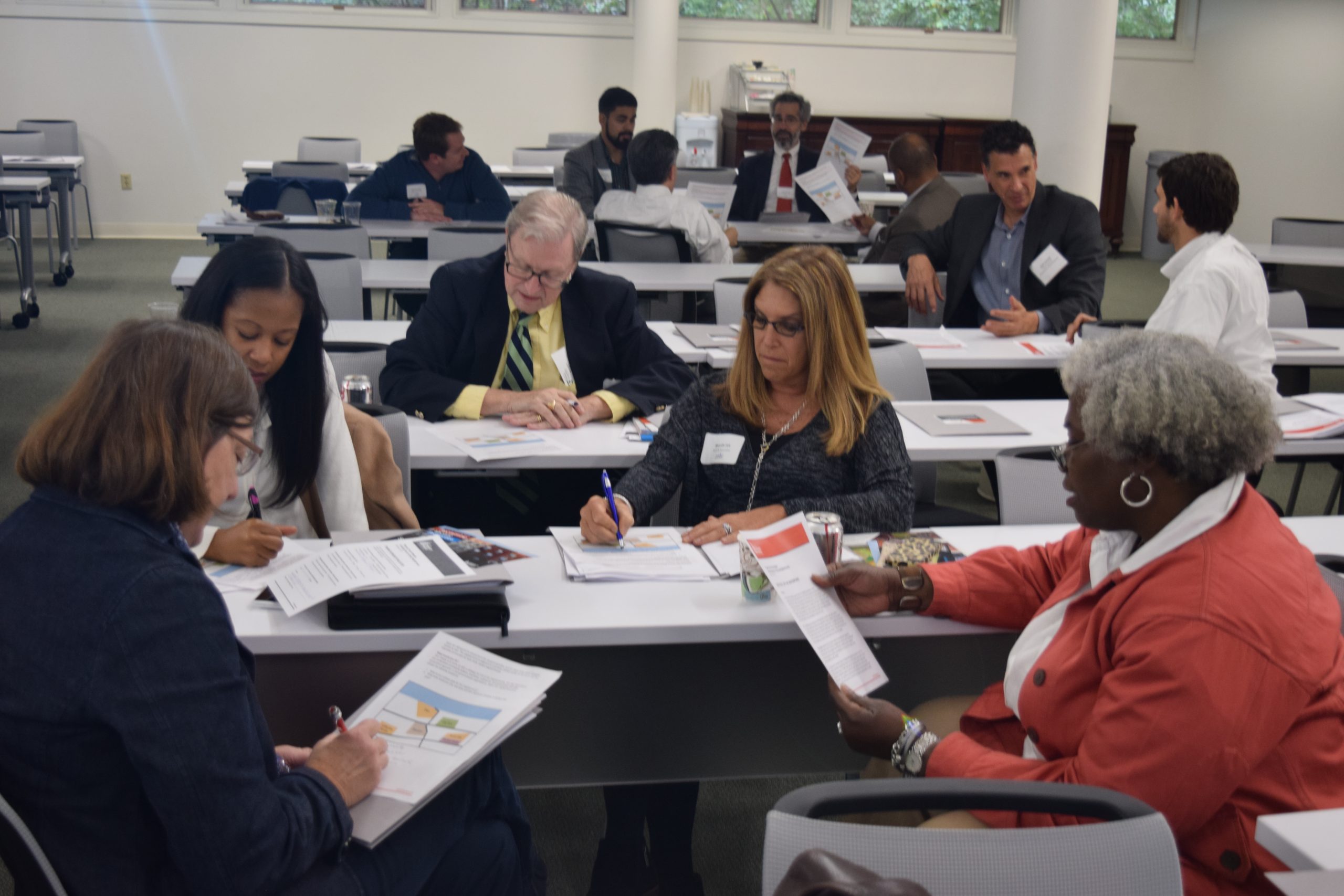President’s Corner: Fresh approaches to the “preventive medicine” of vacant property revitalization
December 17, 2015


Code Enforcement Academy (Credit: Justin Godard for Community Progress)
At Community Progress, we seek to help communities that are dealing with entrenched, often large-scale vacancy and abandonment in their neighborhoods. This is critically important, but it is not enough. In the same way that many in the healthcare sector have embraced the importance of preventive medicine, we must find ways to halt deteriorating property conditions and prevent vacancy before it becomes entrenched. One of the earliest signs of trouble in a neighborhood can often be found in an increasing number of code violations, and housing and building code enforcement can be a very effective intervention.
Just before Thanksgiving, nearly 70 practitioners from around the country gathered in Dallas, Texas, for our first ever Code Enforcement Academy. Participants ranged from heads of departments to inspectors to city attorneys to leaders of nonprofit organizations working to stabilize their neighborhoods. All had come to Dallas to learn from their peers about new approaches to code enforcement that have brought about measureable impact in their communities – from Baltimore’s receivership program to Dallas’ community prosecution model to the rental regulations program in Brooklyn Center, Minnesota, and many more.
One common thread running through the presentations was the need to work more closely with residents, neighbors, landlords and the property owners themselves. Too often, local governments see code enforcement as primarily a punitive tool, in many cases seeking to criminally prosecute violators. These approaches are not only ineffective, but also inequitable. They often end up punishing those homeowners who would like to bring their homes into compliance, but simply lack the funds to do so, while failing to punish irresponsible investors, who have the funds to maintain their property but are often shielded by LLCs and difficult to track down.

Code Enforcement Academy (Credit: Justin Godard for Community Progress)
Shifting to a civil approach to code enforcement is more effective in gaining compliance. This approach should combine the ability to place priority liens on properties for maintenance work completed by the local government with hardship programs for low-income homeowners. Just as importantly, taking such an approach can also fundamentally alter the relationship between code enforcement officials and the residents with whom they need to work more closely.
At the end of an intensive two days of presentations and sessions, the participants in our Code Enforcement Academy were taken on tours of neighborhoods in Dallas, Texas. Leading those tours were representatives of the City’s Community Prosecution Office under the Dallas City Attorney, which teams attorneys with housing and code inspectors in teams of two that are assigned to particular neighborhoods in a highly decentralized model. Despite its name, the community prosecution model emphasizes collaboration and compliance over prosecution. With this neighborhood-based approach, residents know where to turn for support with complaints about a building, and the teams know not only who the “bad actors” are in the area, but also which community leaders and members are ready to work with them.
As we arrived at a community center in a neighborhood in South Dallas, we were greeted by the City Council member representing that area, a local pastor, and several community activists. Each of them in turn described the close relationship they and many of their neighbors had formed with the members of their local community prosecution team and the deep knowledge that these team members had about the communities they served.
This sort of relationship-building stands in stark contrast to more criminal approaches to code enforcement. Getting there requires a rethinking of the purpose of code enforcement more broadly: in the end, the goal is not punitive, but rather to gain compliance and improve those property conditions that have been harming the neighborhood and impacting residents.
As we look forward to 2016, we at Community Progress are excited to continue these conversations about the role of code enforcement and to learn from all of you about your lessons learned, from both the successes and the challenges, so that we can work together to support strong neighborhoods.
Subscribe to join 14,000 community development leaders getting the latest resources from top experts on vacant property revitalization.
